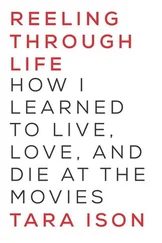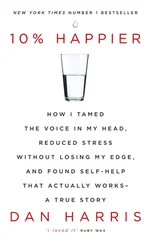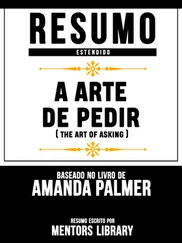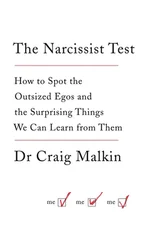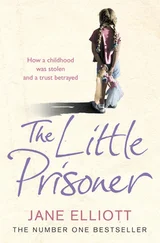The crowd always went wild with affectionate sounds. I loved that they didn’t know anything.
He could have been anyone.
• • •
After my TED talk, I started discussing some of the finer points of my experience as a street performer on my blog, and I was surprised at the number of people who said in the comments: Before I saw your talk, I always thought of street performers as beggars. But now I see them as artists, so I always give them money .
Reading things like this broke and burst my heart at the same time, and pierced the core of the very issue I was trying to grapple with in the talk itself. If the mentality was so easily shifted, how could this be taken from the street to the Internet, where so many artists I knew were struggling to accept the legitimacy of their own calls for help?
I opened a discussion on my blog, one that I’d already seen reflected in the crowdfunding hall of mirrors over the past few years:
What was the difference between asking and begging ?
A lot of people related their experience with their own local buskers: they saw their tips into the hat not as charity but as payment for a service.
If asking is a collaboration, begging is a less-connected demand: Begging can’t provide value to the giver; by definition, it offers no exchange. Here are the words that the blog commenters used over and over when trying to describe begging:
Manipulation, desperation, base, animal, last-ditch, manipulative, guilt, shame .
The key words that kept appearing in relation to asking:
Dignity, collaboration, exchange, vulnerability, reciprocity, mutual respect, comfort, love .
The top-voted comment on the blog, from a reader named Marko Fančović, nails it:
Asking is like courtship; begging, you are already naked and panting .
Asking is an act of intimacy and trust. Begging is a function of fear, desperation, or weakness. Those who must beg demand our help; those who ask have faith in our capacity for love and in our desire to share with one another.
On the street or on the Internet, this is what makes authentically engaging an audience, from one human being to another, such an integral part of asking.
Honest communication engenders mutual respect, and that mutual respect makes askers out of beggars.
• • •
People would put all sorts of weird shit in the hat. I never knew what I was going to find at the end of the day in addition to the collection of coins and bills; it was a little like opening up a fucked-up Christmas stocking. Every random gift made me giddy; people would throw in hand-scrawled thank-you notes on the backs of ATM receipts, little drawings they’d done while watching me, sticks of gum, phone numbers, photographs they’d taken of me, fruit, rocks, hand-woven bracelets, badly rolled joints, love poems.
• • •
Gus wasn’t my only patron in those early days; I had a whole collection. I became a kind of street-performing institution, and the locals had even given me a name: The Eight-Foot Bride, which I took as a compliment since I barely cleared seven foot six atop the milk crates.
There was the guy who managed a sandwich shop on the other side of the square, who loved The Eight-Foot Bride. One day I came in to get a burrito in between statue-ing shifts. My white face (I didn’t bother to remove my makeup between shows) was a dead giveaway. He asked me, full of excitement:
OOH! Are you the statue girl??
Yep. I’m the statue girl .
Your burritos are free forever. What you do is incredible .
You’re kidding .
The free burritos saved me at least $40 a week in food costs.
There was the guy who owned the old-fashioned tobacco shop next to Toscanini’s, which had a hidden balcony lined with tables reserved for chess players to rent for $2 an hour. He let me sit there without paying during my breaks, out of the sun, drinking my free coffee and musing in my journal, without being stared at or asked by any passing strangers why I was covered in makeup.
There was the florist. After my first day up on the box, I realized that the routine of picking flowers by the side of the river wouldn’t be very sustainable (and I didn’t want to single-handedly clean out Cambridge of flora), so I wandered into the local flower shop. I was faced with a puzzle: what kind of flower was pretty and substantial enough to give away, easy enough to hold, and not too expensive? I settled on daisy poms—which are sort of like daisies but not so willowy, and way cheaper. The shop was run by a mother-and-son team, and after buying flowers in there for a few consecutive days, I felt like I was a good enough customer to ask the son:
Do you maybe have any flowers you don’t… need? Like—any seconds or irregulars? Slightly banged up flowers that maybe you can’t sell…?
What do you need them for? he asked.
Well, it’s kind of weird. I’m a statue. I give them away when I move, to people who give me money .
He smiled.
Oh, you’re THAT girl .
He took me down to the basement and showed me a huge bucket of yesterday’s flowers, which were starting to just barely brown at the edges.
Knock yourself out, statue girl. Pick what you want. I’ll give you a great price .
After that, every few days, I’d walk to the florist and patiently wait for him to deal with whatever real customers he had. Then he’d examine his current daisy pom situation and give me the ones that were too wilted to sell but still fit for a street performer—for about a third of the regular price. Some days there just weren’t any rejects, but he’d still hand me a few bunches and make up a cheap price. He liked helping me. Sometimes he would throw in a few slightly wilting roses, and I’d make those the centerpiece of my bouquet for each show—saving a rose for the very last person who gave me a dollar, as a little floral finale.
• • •
People yelled abuse at me occasionally—sometimes from the sidewalk, sometimes from passing traffic.
The most common insults hurled my way included, but weren’t limited to (and it really helps to imagine these in a Boston accent, as that’s usually how they came packaged):
Nice costume, ya fuckin’ reetahd!
Hey baby, I’ll marry your ass!
Get off the sidewalk, freak!
What is this, Halloween? Hahahaha!!!
A very eighties-flavored insult was used a few times:
Get a life!
And then there was this one, shouted from a passing car:
GET A JOB!
Of all the insults hurled in my direction, GET A JOB hurt the most. It was an affront. I took it personally.
I had a job. I was doing my job. I mean, sure. It was a weird job. And a job I’d created out of thin air with no permission from a higher authority. But I was working , and people were paying me. Didn’t that make it a job ? And, I would think as my face burned with resentment, I was making a consistent income, which made the GET A JOB insult hurt even more.
I’m making plenty of money. Maybe more than you, asshole , I’d think, all hurt and defensive.
• • •
Brené Brown, a social scientist and TED speaker who has researched shame, worthiness, courage, and vulnerability, recently published a book called Daring Greatly , which I fortuitously picked up at a Boston bookstore when I was just beginning to write this book. I was so blown away by the commonalities between our books that I twittered her, praising her work and asking her if she would give me a foreword for this book. [3] She said yes. If you haven’t read it, go back and read it now. It’s wonderful.
She writes:
Читать дальше

